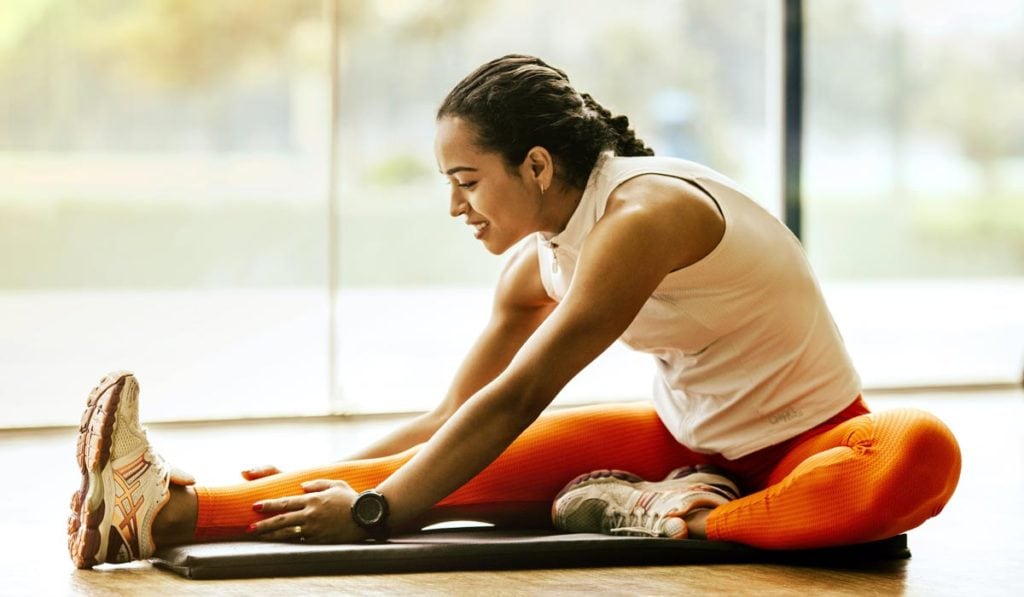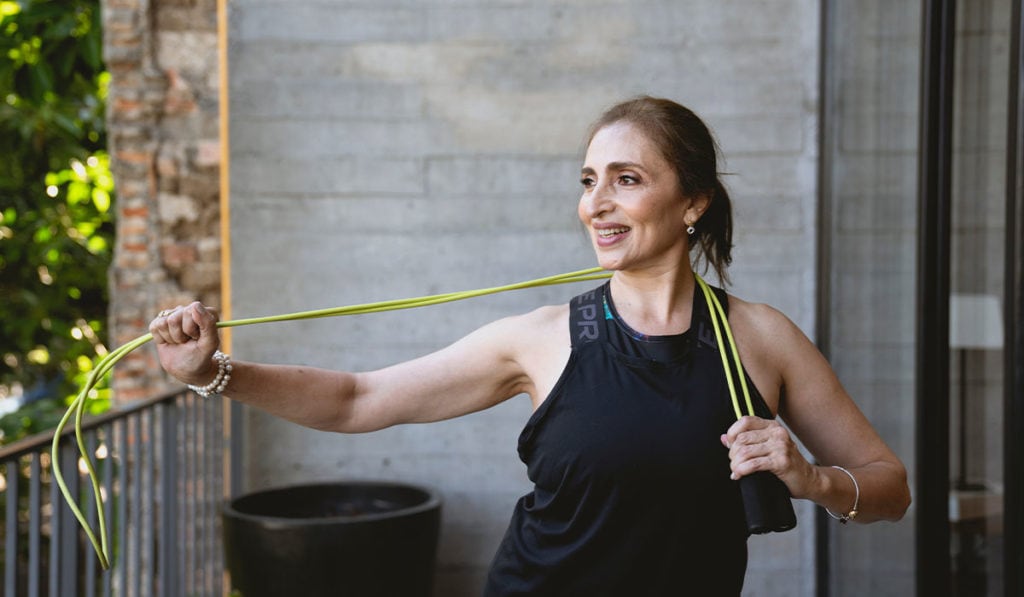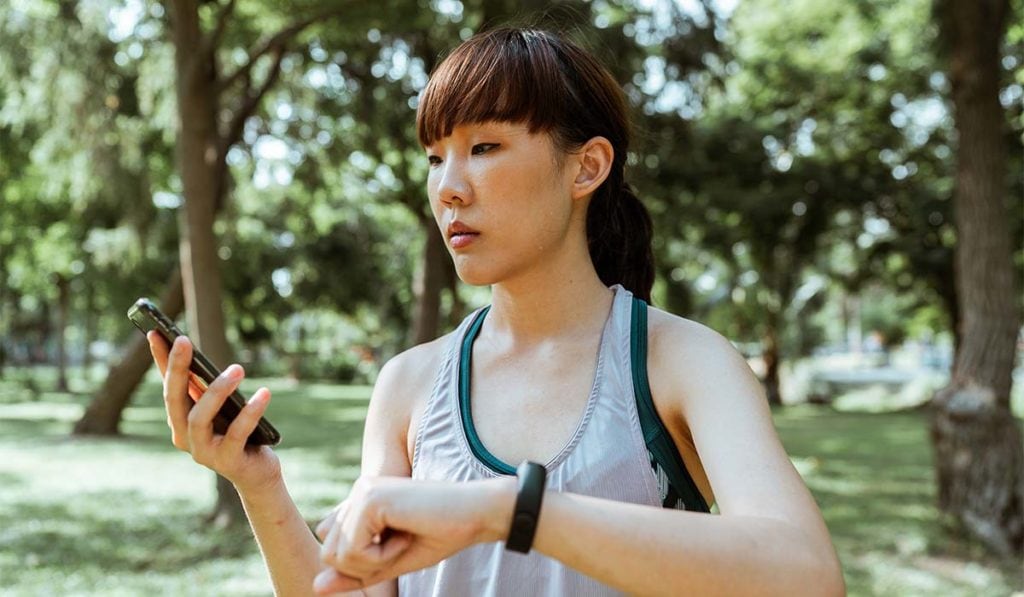
Foam Rolling: Everything You Need to Know
Foam rolling is an effective self-massage technique that can help you recover from running, cycling, or cross-training workouts. If you’ve never done it before, it can be a daunting experience, but once you get the hang of it, you’ll reap plenty of great benefits! For those just getting started, here’s a general guide on foam rolling, including details on what it is, how to do it, and tips and tricks for the best results.
What is foam rolling?

Foam rolling is a technique for self-massaging your body’s connective tissues. The process involves using your body weight and a foam roller to put pressure on knots and release the tension or “roll them out.”
Whether you exercise regularly or not, foam rolling is an excellent way to eliminate muscle tension in nearly any part of your body. Much like a deep tissue massage (without the expense), foam rolling can leave you feeling weightless and tension-free, even if you’re training intensely.
What are the benefits of foam rolling?

Foam rolling is beneficial both before and after your workouts. Many people love it but also hate it because it can be uncomfortable. Although rolling out those knots in your muscles might not be fun, there are many benefits! For instance, foam rolling:
- Promotes relaxation
- Alleviates muscle soreness and tension
- Increases muscle blood flow, elasticity, and mobility
- Helps prevents injuries
- Aids in muscle repair recovery after strenuous exercise
- May help decrease blood pressure1
- May help alleviate chronic pain1
Should I be foam rolling?

Foam rolling isn’t just for avid exercisers. Most people can benefit from it. Whether you sit at a desk all day, have joint problems, or experience muscle soreness due to your regular exercise routine, foam rolling is a great way to get relief.
If you workout regularly, it’s a good idea to foam roll immediately before or after a workout. Doing it beforehand can help loosen up your muscles and help you move more efficiently as you exercise. Foam rolling afterward will help reduce muscle soreness and decrease overall recovery time.
Otherwise, if you deal with chronic soreness and muscle tension, foam rolling first thing in the morning or right before you go to bed is great, although you can do it anytime.
How to foam roll

As we mentioned, foam rolling isn’t the most comfortable experience, so starting slowly and gently is best if you’ve never done it before. If you roll too intensely, you could actually risk bruising your muscles.
First, identify the area of soreness in your body. It might be your quads, hamstrings, or another commonly tight area. In a slow and controlled manner, gently lower the sore area onto a cylindrical foam roller until you feel some discomfort, but not pain. Hold your body with your weight on the foam roller for about 20 to 30 seconds.
You may also want to gently roll back and forth to get rid of any knots, stopping and holding a stable position on any areas that feel tender and need extra work. Also, don’t forget to breathe as you work out your muscle tension!
As you learn how your body responds to foam rolling, you can adjust the intensity for the best results.
4 best foam roller exercises to try
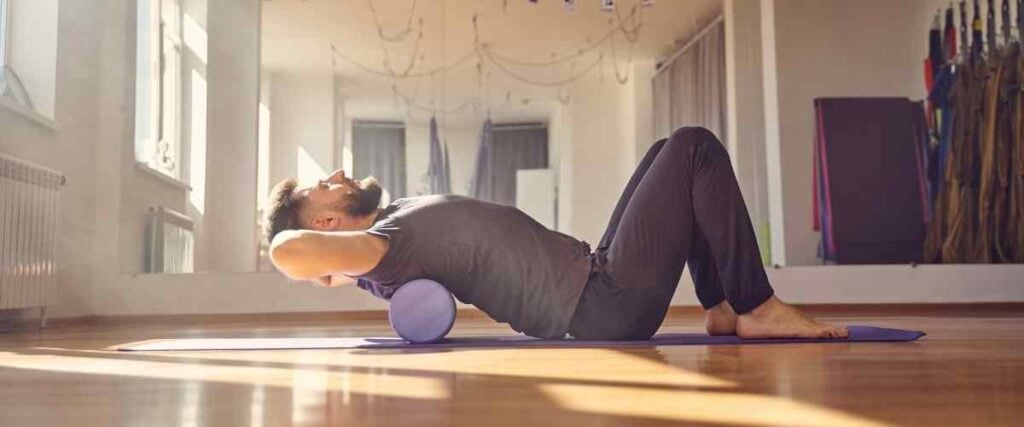
If you’ve never used a foam roller before, you should know that it can be somewhat painful or uncomfortable the first time you try it. This is normal! You can expect some discomfort, but it shouldn’t be excruciating.
To get started, try these simple foam roller exercises. They target areas that are frequently tight and uncomfortable, especially after exercising.
1. Foam rolling your upper back

- Lay on the ground with the foam roller underneath your shoulder blades.
- Cross your arms over your chest for additional support and lift your hips slightly off the ground.
- Push forward and backward off your feet to roll out your upper back, from your shoulder blades to your mid-back.
2. Foam rolling your glutes

- Sit on the foam roller. Bend your knees and place your feet flat on the ground.
- Put your weight onto your right leg and roll up and down along the length of your glute muscle.
- Switch sides and repeat on the left leg.
3. Foam rolling your quads

- Start in a plank position and put the foam roller underneath the front of your thighs.
- Lift your body slightly off the ground, putting your weight onto your forearms.
- Push with your arms and move forward and backward, from your pelvic bone to your knee.
- Align your right and left leg, so you’re rolling the muscles at the same time.
4. Foam rolling your calves
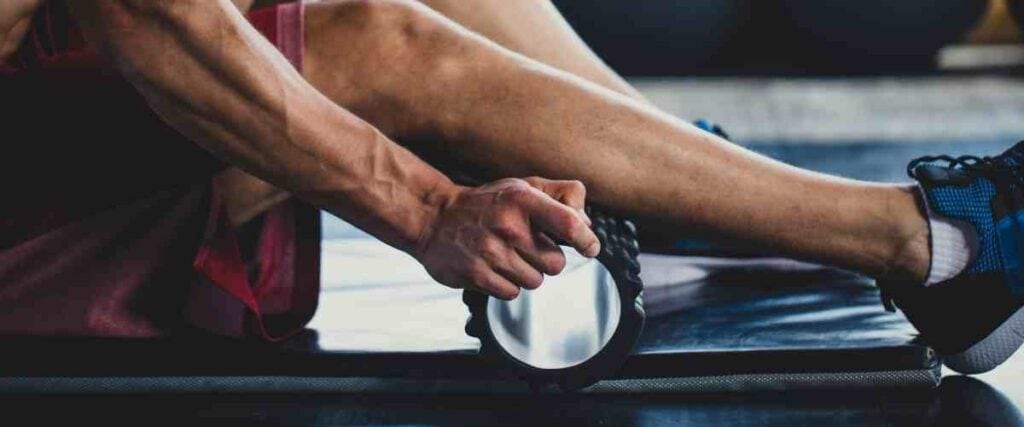
- Sit on the floor with your legs extended and position the foam roller underneath your calves.
- Lift your body up and cross your left leg over your right leg.
- Slowly roll your right calf back and forth over the foam roller using your arms to support your body.
- Switch legs and do the same on your left calf.
Try these exercises after completing your next Vingo running or cycling route!
How do I choose a foam roller?

A foam roller is a large and thick cylinder made of foam that comes in several different sizes and densities. A softer foam roller is best if you’re new to foam rolling or have extremely tight muscles.
If you buy a cheap foam roller, you’ll probably just get a roll of foam, which will be too soft and give underneath the weight of your body. Instead, you’ll want a foam roller with a rigid inner plastic cylinder and a thick layer of dense foam on the outside. It shouldn’t give very much under your body weight.
Some foam rollers have ridges or knobs on the surface, which you can use to relieve general muscle tension and specific trigger points, like if you find a knot while foam rolling. Using the roller’s knobs and ridges is an excellent way to loosen muscle knots gently without causing any bruising or trauma.
You can get foam rollers online or in stores, but generally speaking, it’s worth investing in a good one. If you don’t have a foam roller or can’t buy one, you can use a tennis ball, baseball, kitchen rolling pin with dish towels wrapped around it, or even a hard plastic bottle.
Key Takeaways:
Foam rolling is a very effective way to eliminate muscle soreness and reduce recovery time after workouts. Just make sure to use it properly to avoid bruising your muscles or unnecessary pain.Sources:
- Debraux, P. (2018, May 16). Impact of foam rolling on the cardiovascular system. Sciences of Sport. https://www.sci-sport.com/en/articles/impact-of-foam-rolling-on-the-cardiovascular-system-169.php



